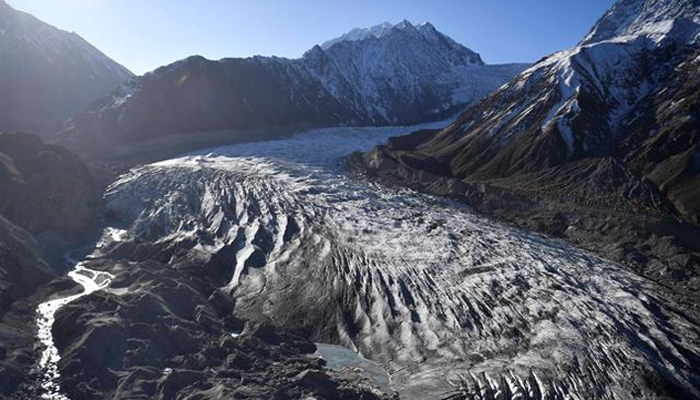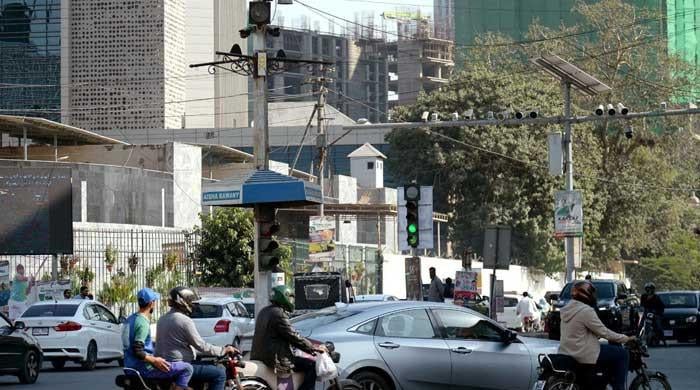33 glacial lakes in Pakistan’s North prone to outburst flooding: report
The report highlighted that the northern mountain ranges are melting fast due to rising temperatures, posing threats to 7.1 million people in the region
September 28, 2020

ISLAMABAD: An official report of the climate change ministry pointed out 33 lakes out of as many as 3,044 glacial lakes developed in Gilgit-Baltistan (GB) and Khyber-Pakhtunkhawa (KP), which are prone to hazardous Glacial Lake Outburst Flooding (GLOF), The News reported on Monday.
Glacial Lake Outburst Flooding are sudden events, which can release millions of cubic meters of water and debris, leading to the loss of lives, property, and livelihoods among remote and impoverished mountain communities.
The report highlighted that the northern mountain ranges — Hindu Kush, Karakorum and Himalayas — are melting fast due to rising temperatures, posing threats to 7.1 million people in the region.
Given the intensity of the situation three early warnings systems have already been installed and modalities are being sorted out to install 47 more such systems in GB and KP regions, the ministry notified.
“The ministry is pursuing a project GLOF 2 in which 250 engineering structures would be developed including chick dams, mini dams, water ponds, spillways, and slope stabilization,” according to the official record.
Read more: In Pakistan, flood risk continues to loom due to rise in glacier melt rate
The record also revealed that about 408 river discharge gauges/sensors (238 in GB and 170 KPK) would also be installed enabling all the households in targeted communities to receive and respond to early warnings and take the appropriate actions accordingly.
The record underscored that snowline has been shifting rapidly uphill causing the biodiversity to migrate and precipitation in the form of rainfall instead of snowfall, adding “Such up-rise of the thermal regime has started melting the low elevation glaciers at a faster rate.
Consequently, the formation of new glacial lakes and the expansion of existing lakes to the danger of outburst flood have increased.”
Most of the Pakistani glaciers are debris-covered and the thickness of the debris layer is inversely related to the ice melt rate. Lower elevation glaciers have a large coverage of debris than higher ones.









